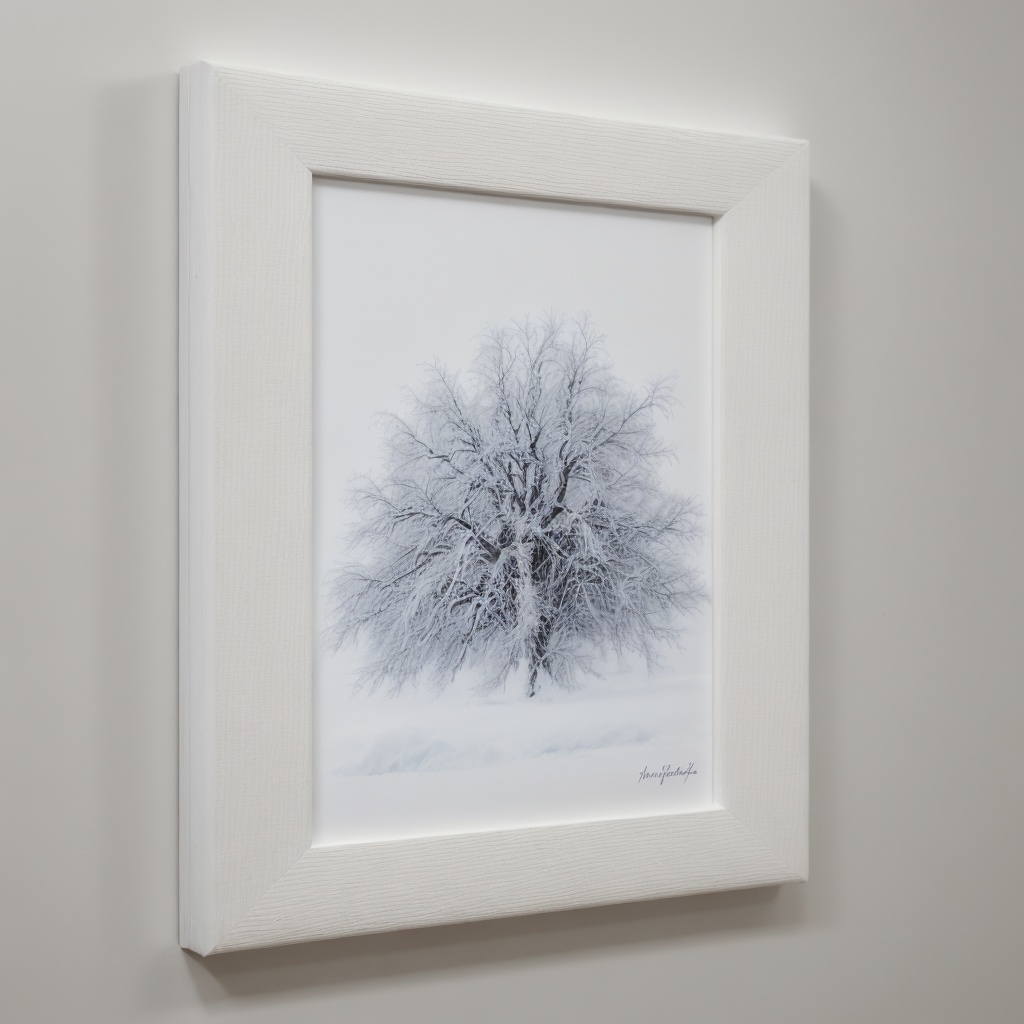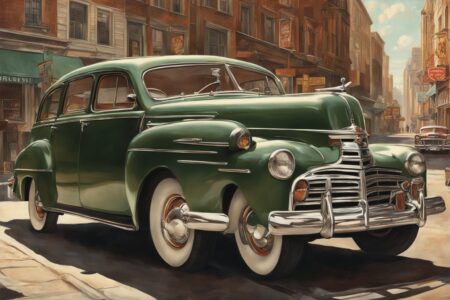Exploring the Timeless Appeal of White Canvas Art

White canvas art, with its stark simplicity and profound depth, has captivated the art world for centuries, evolving through various historical periods influenced by many iconic artists. This blog post delves into the allure of white canvases, discussing their intrinsic characteristics and the psychological influence they exert on viewers. We will explore how today’s artists continue to innovate within this medium, using various techniques to breathe life into their white canvases. Additionally, this post will cover the practical aspects of white canvas art, such as maintenance and preservation, ensuring these pieces retain their beauty for future generations. By examining how white canvas art seamlessly integrates into modern interiors and forecasting its future in the art world, we will appreciate the continuing relevance and popularity of this unique art form.
CONTENT
Introduction to White Canvas Art
Defining White Canvas Art
White canvas art refers to artworks primarily using white space to convey artistic expression. This genre emphasises minimalism and the power of negative space in an art piece. Often seen as a departure from more traditionally colourful or detailed works, white canvas art challenges viewers to find meaning and emotion in what appears to be a simple, unembellished surface.
Origins and Evolution
The origins of white canvas art trace back to the 20th century, when artists started experimenting with abstraction and minimalism. It was a shift from the detailed and narrative-driven art of earlier periods to a focus on purity and simplicity. This art form has evolved as various movements, such as Modernism and Contemporary Art, have put their unique spins on it, pushing the boundaries of what a white canvas can represent.
Philosophical and Cultural Significance
White canvas art is not just an aesthetic choice but is deeply rooted in philosophical and cultural discussions about the nature of art and the act of perception. Artists who specialise in white canvas often use their works to question and explore the essence of art itself, prompting viewers to consider how we interpret materials, shapes, and colours—or the lack thereof—in the context of a work of art. This art form continues to be a crucial dialogue in understanding the relationship between art, artist, and audience.
The History of White Canvas Art
The history of white canvas art can be traced back to the early 20th century, rooted in the avant-garde movements that sought to redefine the nature of art. Artists like Kazimir Malevich were pioneers, with works such as “White on White” in 1918, which marked a significant step towards abstract art. This movement was part of a broader push towards minimalism and abstraction across Europe and America, where artists explored the idea that art could consist purely of geometric shapes and, ultimately, just the essence of colour itself.
Throughout the mid-20th century, the exploration of white as a central theme continued to evolve, heavily influenced by movements like Abstract Expressionism and Minimalism. Artists such as Robert Ryman and Agnes Martin are notable figures who focused almost exclusively on white, using subtle textures and variations in shade to create depth and interest. Their works, characterised by an intense focus on the meditative qualities of monochrome, challenged traditional forms of visual representation and emphasised the importance of spatial relationships in canvas art.
As we moved towards the late 20th and early 21st centuries, white canvas art began to be seen not just in the context of fine art but also within broader aesthetic and cultural frameworks. This period saw the incorporation of digital and multimedia elements, with artists like Olafur Eliasson utilising white canvases to explore light and perception in art, thereby broadening the scope of white canvas art. The historical trajectory of white canvas art shows it as a dynamic and evolving medium that continues to hold a critical place in contemporary art discourse.
Key Characteristics of White Canvas Art
Simplicity and Minimalism
One of the most defining characteristics of white canvas art is its minimalistic approach, which strips back the non-essential elements to focus on the essentials of art—form, texture, and tonal variations. This simplicity allows for a profound versatility, where the absence of colour challenges the viewer to look beyond conventional visual stimuli and find meaning in what might initially appear as a blank space.
Texture and Detail
Although white canvas art may seem simplistic at first glance, a closer observation often reveals a complex interplay of textures and subtle details. Artists painstakingly work on the canvas surface to incorporate various materials and techniques such as impasto, sanding, and layering. These textured details engage the viewers’ senses and make each piece a unique exploration of tactile as well as visual artistry.
Light and Shadow Interaction
The interaction of light and shadow plays a crucial role in the presentation of white canvas art, transforming what could be perceived as a static white space into a dynamic scene that shifts with the lighting conditions. The subtle variances in shade that emerge through this interplay create a living piece of art that offers new interpretations and experiences at different times of the day and in different environments.
Influential Artists of White Canvas Art
One of the most influential figures in the realm of white canvas art is Robert Ryman, who spent his career experimenting with different shades of white and the impacts of natural light on texture. Ryman’s work was deeply focused on the properties of the paint and the canvas itself, rather than merely using them as mediums to transport ideas. His nuanced approach helped validate white canvas art as a serious artistic endeavour, pushing forward the notion that an artwork could be fundamentally about its own creation.
Agnes Martin is another artist who significantly contributed to the appreciation of white canvas art. Known for her grid patterns and subtle use of light pastel colours, Martin’s art is often aligned closely with Minimalism, yet her works conveyed emotional depth and philosophical contemplation, particularly around concepts of perfection and beauty. Her meticulously crafted pieces, often involving fine pencil lines and barely-there colour washes, draw attention to the often overlooked intricacies and emotion embedded in minimalist art.
Another notable artist is Kazimir Malevich, a pioneer of geometric abstract art known for his seminal work, “White on White” created in 1918. This artwork epitomised the Suprematist movement, which concentrated on basic geometric forms painted in a limited range of colours. Malevich’s white canvas broke away from traditional notions of artistic representation, emphasising the importance of feeling in art. His works paved the way for future generations of artists to explore colour and form in various contexts of modernist art, making a profound impact on how art was understood and appreciated in contemporary cultures.

White Canvas Art in Modern Interiors
Enhancing Minimalist Decor
White canvas art is particularly effective in minimalist interior designs, where the objective is to maintain a clean and uncluttered space. The simplicity and subtlety of a white canvas can amplify the serene and tranquil aesthetic of minimalist rooms. This type of art complements minimalism by reinforcing the ‘less is more’ philosophy, helping to create a calm environment where each element is both functional and carefully considered for its aesthetic value.
Creating Visual Space
In modern interiors, white canvas art can act as a visual palate cleanser. Unlike more vivid artworks, white canvases do not demand attention but rather subtly contribute to the overall feel of a room. They can make small spaces appear larger and brighter as the white expands the perception of space. This characteristic of white canvases makes them highly versatile and beneficial in numerous interior designs, fitting seamlessly into various colour schemes and decor styles.
Dynamic Interplay with Light
The reflective qualities of white canvas art make it an excellent choice for spaces that receive a good amount of natural light. During the day, as the quality of natural light changes, the art piece also subtly changes, offering new perspectives and interactions. This dynamic relationship between the art and the environment ensures that the space remains engaging and vibrant, providing an ever-evolving backdrop to daily activities.
The Psychological Impact of White Canvas Art
White canvas art significantly influences psychological well-being by cultivating a sense of peace and clarity. The colour white is often associated with purity and tranquillity, making it an ideal choice for environments where stress reduction is key, such as in homes or therapeutic settings. The minimalistic nature of white art allows viewers to project their own emotions and thoughts onto the canvas, acting as a form of emotional or mental relief. This can be particularly therapeutic, providing a blank slate that aids in meditation and introspection.
In addition to promoting relaxation, white canvas art also stimulates the creative thoughts of viewers. With the absence of distracting colours and complex themes, individuals are encouraged to think more deeply about the art, exploring the subtleties of texture and form, and potentially igniting their creativity. The interpretative nature of white canvas art means that each person might see something different or develop unique thoughts and ideas, enhancing cognitive flexibility and openness to new possibilities.
Moreover, the placement of white canvas art in spaces often contributes to a perceived increase in area and cleanliness, which are factors known to positively influence mood and productivity. In a professional setting, such as an office, white canvas art can help in creating an environment that feels more spacious and less constrained. These aspects of psychological comfort and spatial freedom are not just crucial for individual well-being but also enhance overall workplace ambiance, fostering a more conducive atmosphere for collaboration and efficiency.
Techniques for Creating White Canvas Art
Layering and Texturing
A popular technique in creating white canvas art is the use of layering and texturing, which gives depth and dimension to an otherwise monochromatic surface. Artists often employ various materials like gesso, plaster, or even textiles to build up layers on the canvas. These enhanced textures can catch light differently throughout the day, changing the artwork’s appearance and interaction with its environment. This approach allows the canvas to transcend its two-dimensional plane and engage viewers in a more tactile aesthetic experience.
Monochromatic Tonal Variations
Exploring tonal variations within white hues is another crucial technique in white canvas art. By subtly incorporating shades like cream, beige, or light grey, artists can create soft contrasts and nuances that suggest shapes and forms. This technique requires a meticulous blending process to ensure the transitions between tones are almost imperceptible, yet effective in drawing in and engaging the viewer’s eye. These slight variations can suggest depth or highlight certain aspects of the piece, depending on the light conditions and viewing angle.
Minimalist Strokes and Marks
In white canvas art, every stroke and mark is deliberate and holds significant visual importance. Artists might use minimalistic strokes, careful drippings, or strategically placed dots to impose a sense of motion or emotion on the canvas. This restraint in application calls for precise control and thoughtful placement, where less is indeed more. Such minimalist techniques emphasise the importance of each mark in contributing to the overall composition and visual impact of the artwork, compelling the viewer to appreciate the simplicity and complexity in each deliberate choice.
Caring for and Preserving White Canvas Art
Caring for white canvas art requires meticulous attention due to its vulnerability to visible imperfections and dirt accumulation. Regular dusting with a soft, dry cloth or a microfibre duster is essential to prevent dust particles from settling into the canvas’s texture, which could detract from its pristine appearance. Avoid using chemical cleaners or water on white canvases, as these can cause discolouration or staining. Instead, for more stubborn marks, opt for gently dabbing with a slightly dampened cloth in a discrete area to test its effect on the medium first.
Environmental factors also play a crucial role in the preservation of white canvas art. Direct exposure to sunlight can lead to yellowing or fading, so it is advisable to position these artworks in spaces where they can avoid harsh direct light. Additionally, maintaining a stable humidity level is critical as excessive moisture can encourage the growth of mould or cause the canvas material to warp. Using dehumidifiers or maintaining air circulation can help mitigate these risks and preserve the artwork’s integrity over time.
Finally, framing white canvas art with a UV-protective glass or acrylic cover can provide an additional layer of protection against environmental damage. This not only shields the piece from dust and pollutants but also minimises the ageing effects of UV light. When choosing frames, it is essential to ensure that they are made with acid-free materials to prevent chemical interactions that could damage the canvas edges over time. Careful consideration in framing and displaying white canvas art will substantially extend its life and maintain its aesthetic value for future enjoyment.
The Future of White Canvas Art
Incorporation of New Media
The future of white canvas art looks to the integration of new media and technology, such as digital projection and interactive elements. These advancements will enable artists to infuse traditional white canvas paintings with dynamic content that can change and respond to the viewers’ presence or environmental shifts. By blending classic techniques with cutting-edge technology, artists can push the boundaries of how white canvas art is perceived and appreciated, creating multi-dimensional experiences that challenge the viewer’s engagement and interpretation.
Sustainability in Materials
As the global emphasis on sustainability grows, the materials used in white canvas art are evolving. Artists are increasingly seeking eco-friendly alternatives for paints and canvases, such as organic fabrics and non-toxic paints. This shift not only impacts the environment positively but also opens up new textures and mediums for artists to explore within the white canvas genre. The use of sustainable materials is likely to become a staple in art creation, influencing aesthetic choices and studio practices in profound ways.
Expanding Philosophical and Conceptual Themes
White canvas art is set to delve deeper into philosophical and conceptual realms, challenging audiences with themes that reflect contemporary issues such as identity, space, and existentialism. As the world navigates complex social and ethical questions, white canvas art can provide a reflective surface for societal introspections and discussions. This evolution will enhance the role of white canvases as not just art objects but as tools for intellectual and emotional exploration, making them more relevant in academic and communal spaces alike.
Conclusion: The Enduring Popularity of White Canvas Art
The enduring popularity of white canvas art is testament to its profound impact and versatility in the art world. It transcends cultural and temporal boundaries, providing a universal language of simplicity and introspection. In an era where there is often sensory overload, the calmness and clarity that white canvas art offers make it appealing to a wide audience, ranging from art connoisseurs to individuals seeking a minimalist aesthetic in their living or work spaces. Its ability to adapt and evolve with artistic styles and trends further cements its place within both traditional and contemporary art narratives.
White canvas art also continues to play a significant role in the evolution of artistic expression. As new generations of artists explore and reinterpret its principles, white canvas art remains at the forefront of discussions about the essence and the boundaries of what art can represent. Whether through exploring textures, incorporating technology, or challenging viewers with stark, powerful statements within seemingly simple compositions, this genre remains vibrant and ever-relevant.
Moreover, the intrigue and debate generated by white canvas art ensure its continued relevance and popularity. It challenges viewers’ perceptions, asking them to engage with art on more introspective and personal levels. As we move forward, the canvas of white continues to be a potent symbol of both artistic potential and purity, a reminder of the infinite possibilities that await in the simplicity of a single colour. The dialogue it creates between the artist and the audience, the visible and the invisible, the finite and the infinite, ensures that white canvas art will remain an essential part of the global art scene for years to come.






